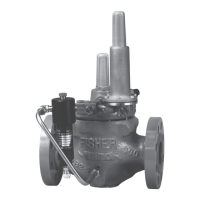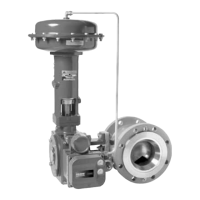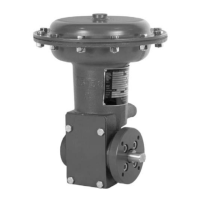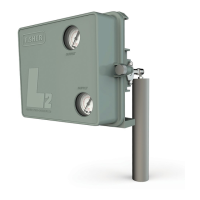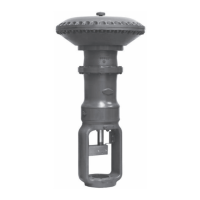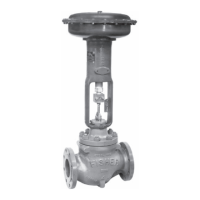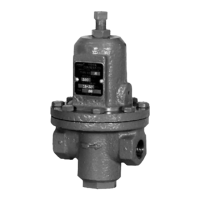Principle of Operation
As long as the outlet (control) pressure is above
the outlet pressure setting, the pilot valve plug or
disk remains closed. Force from the main spring,
in addition to inlet pressure bleeding through the
Type 112 restrictor, provides downward loading
pressure to keep the main valve diaphragm and plug
assembly tightly shutoff. When the outlet pressure
decreases below the pilot outlet pressure setting, the
pilot plug or disk assembly opens. Loading pressure
bleeds downstream through the pilot faster than it
can be replaced through the Type 112 restrictor. This
reduces loading pressure on top of the main valve
diaphragm and plug assembly and lets the unbalanced
force between inlet and loading pressure overcome
the main spring force to open the regulator diaphragm
and plug assembly.
As the outlet pressure rises toward the outlet pressure
setting, it compresses the pilot diaphragm against the
pilot control spring and lets the pilot valve plug close.
Loading pressure begins building on the regulator
diaphragm and plug assembly. The loading pressure,
along with force from the main spring, pushes the
diaphragm and plug assembly onto the knife-edged
seat, producing tight shutoff.
Installation
!
WARNING
Personal injury or equipment damage,
due to bursting of pressure-containing
parts may result if this regulator is
overpressured or is installed where
service conditions could exceed any
rating of the adjacent piping of piping
connections. To avoid such injury or
damage, provide pressure-relieving or
pressure-limiting devices to prevent
service conditions from exceeding those
limits. Also, be sure the installation is
in compliance with all applicable codes
and regulations. Additionally, physical
damage to the regulator could break
the pilot off the main valve, causing
Product Description
The 161 Series pilots are mainly used in natural
gas, air or other non-corrosive gas applications. For
applications that have high pressure drops, using a
Type 161AYM, 161EBM or 161EBHM monitor pilot will
increase the accuracy of the regulator.
161 Series pilot models are the following:
Type 161—Downstream pressure range from 5 to
300 psig / 0.34 to 20.7 bar. Pilot bleed exhausts
downstream through the sense (control) line.
Type 161M—Downstream pressure range from
5 to 300 psig / 0.34 to 20.7 bar. A static sensing
(control) line is isolated from pilot bleed (exhaust).
The Type 161M is used in working monitor and other
application that require a sense (control) line isolated
from pilot bleed (exhaust).
Type 161AY—Low-pressure pilot with an outlet
pressure range from 6 in. w.c. to 7 psig / 15 mbar to
0.48 bar. Pilot bleeds (exhausts) downstream through
the sense (control) line.
Type 161AYM—The monitor version of the
Type 161AY pilot. The pilot bleed (exhaust) is
isolated from the sense (control) line. This pilot is
used in monitoring systems requiring an isolated pilot
bleed (exhaust).
Type 161AYW- A version of the Type 161AY used
solely as the upstream monitor pilot on a working
monitor setup.
Type 161EB—High accuracy pilot with an outlet
pressure range from 5 to 350 psig / 0.34 to 24.1 bar.
Pilot bleeds (exhausts) downstream through the sense
(control) line.
Type 161EBM—The monitor version of the
Type 161EB pilot. The pilot bleed (exhaust) is
isolated from the sense (control) line. This pilot is
used in monitoring systems requiring an isolated pilot
bleed (exhaust).
Type 161EBH—The high pressure version of the
Type 161EB pilot with an outlet pressure range from
250 to 700 psig / 17.2 to 48.3 bar.
Type 161EBHM—The high pressure version of the
Type 161EBM pilot with an outlet pressure range from
250 to 700 psig / 17.2 to 48.3 bar.
Table 3. Pilot Flow Coefficients
161AY SERIES 161EB SERIES
Orice Size C
g
C
v
C
1
Orice Size C
g
C
v
C
1
3/32 in. / 2.4 mm
1/8 in. / 3.2 mm
1/4 in. / 6.4 mm
6.9
12.3
50
0.20
0.35
1.43
35
35
35
1/8 in. /
3.18 mm
8.5 0.28 30.4
3
161 Series
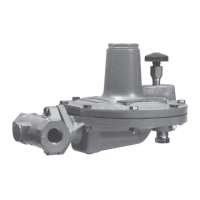
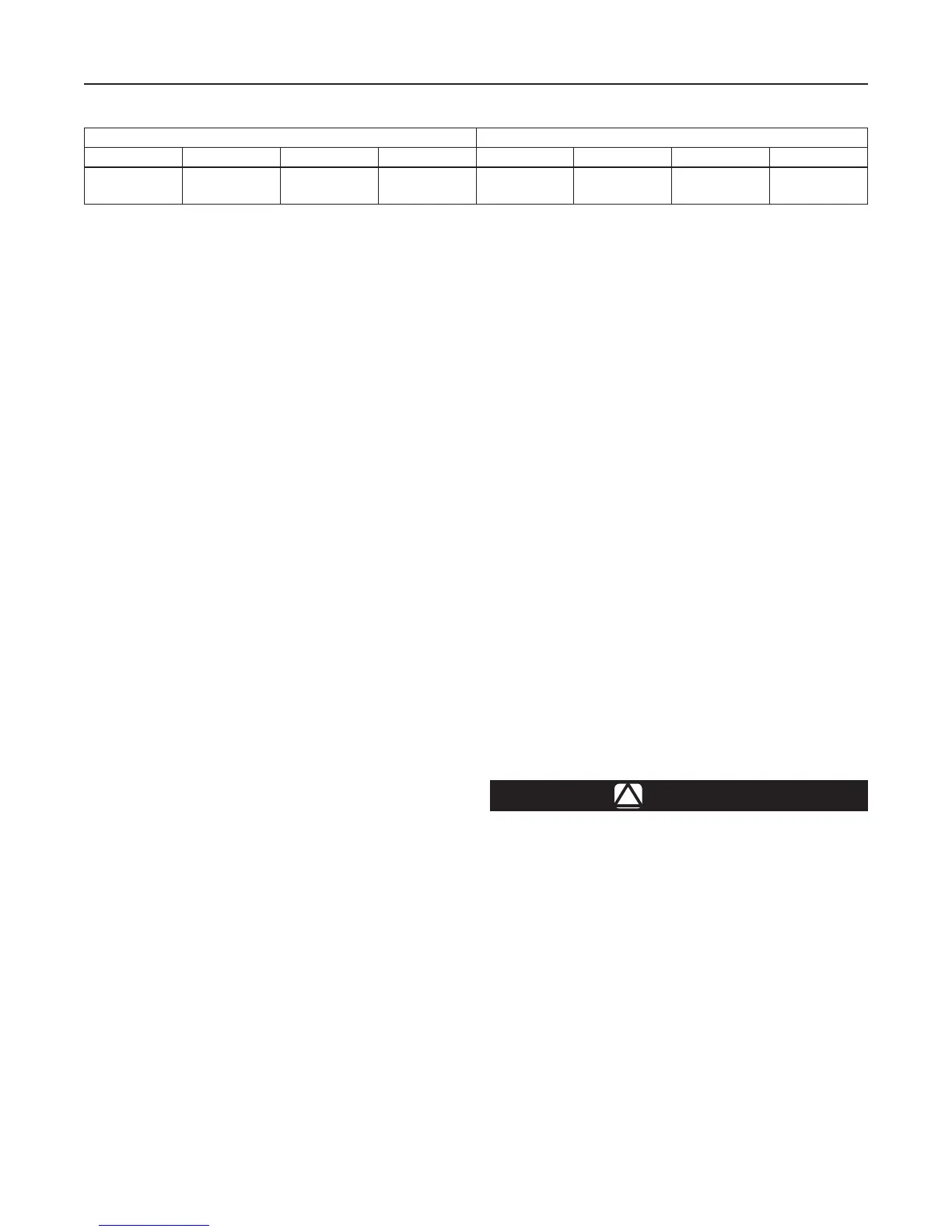